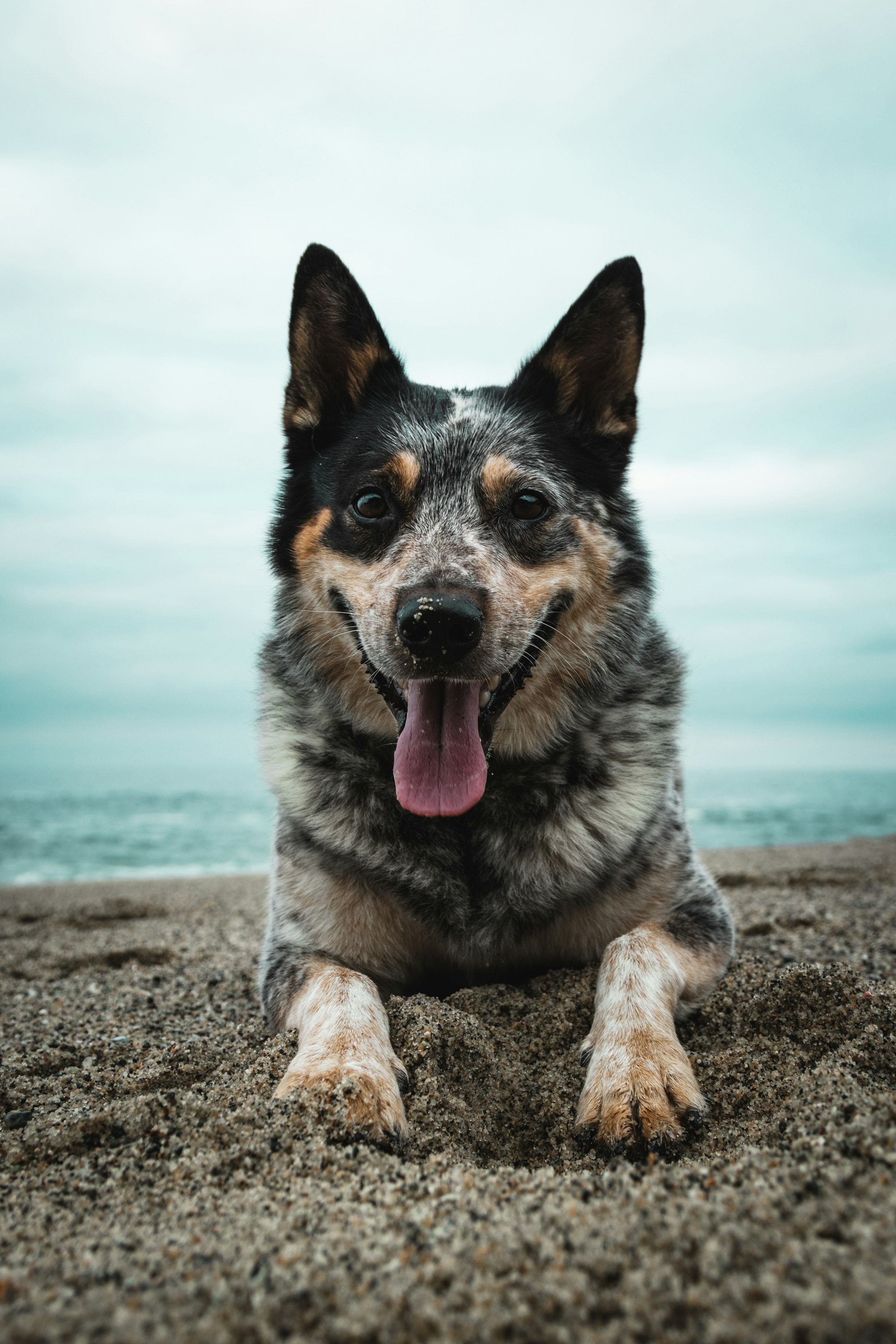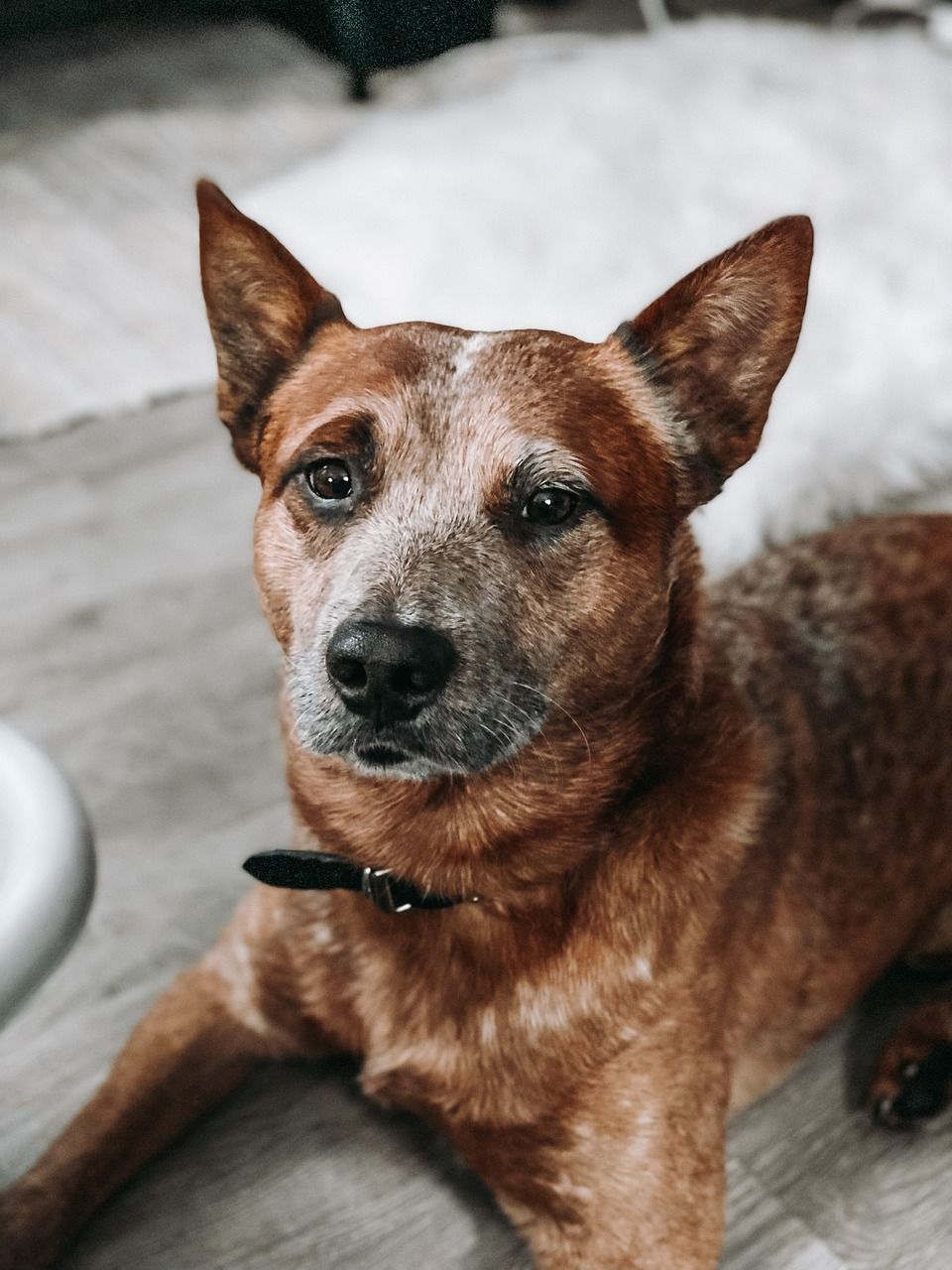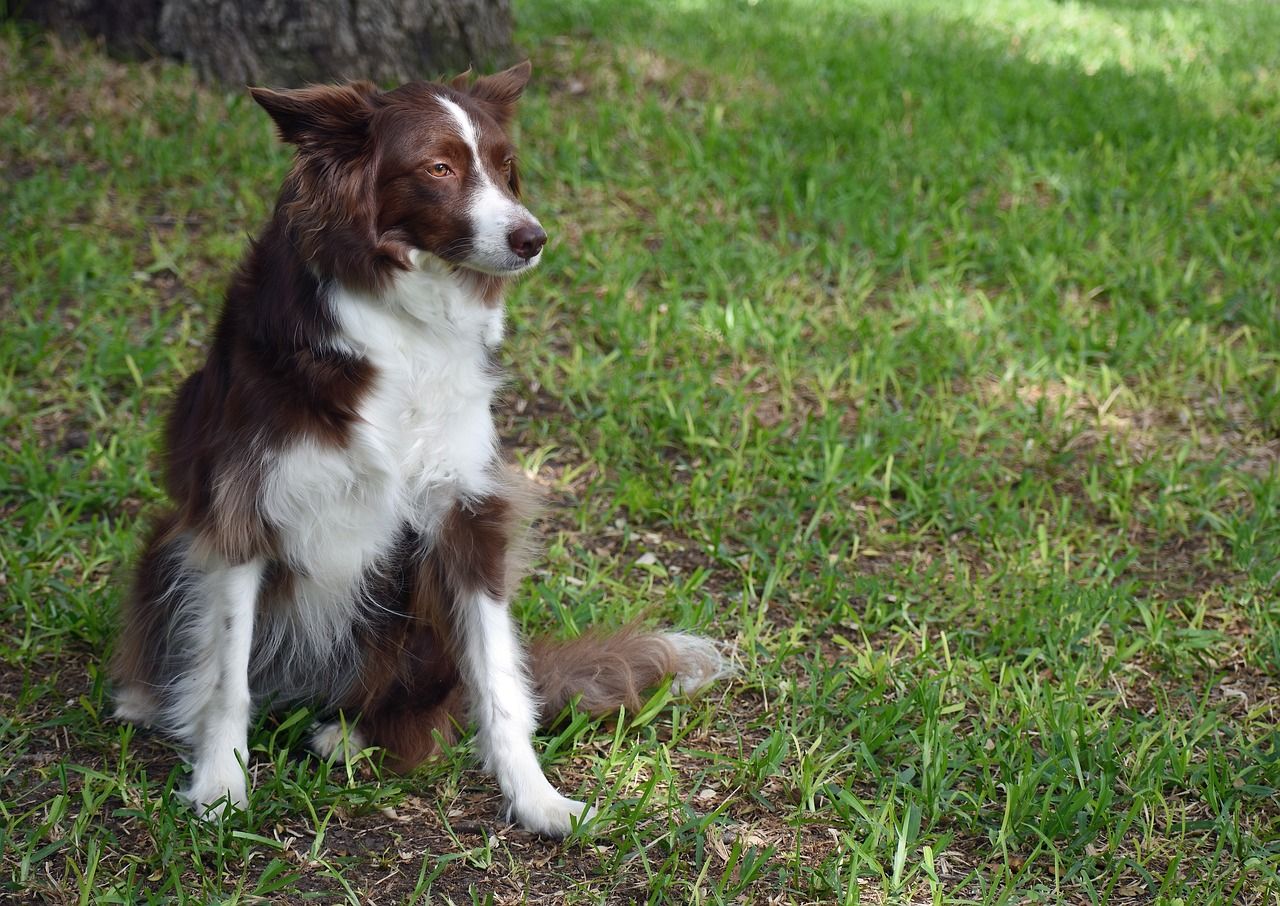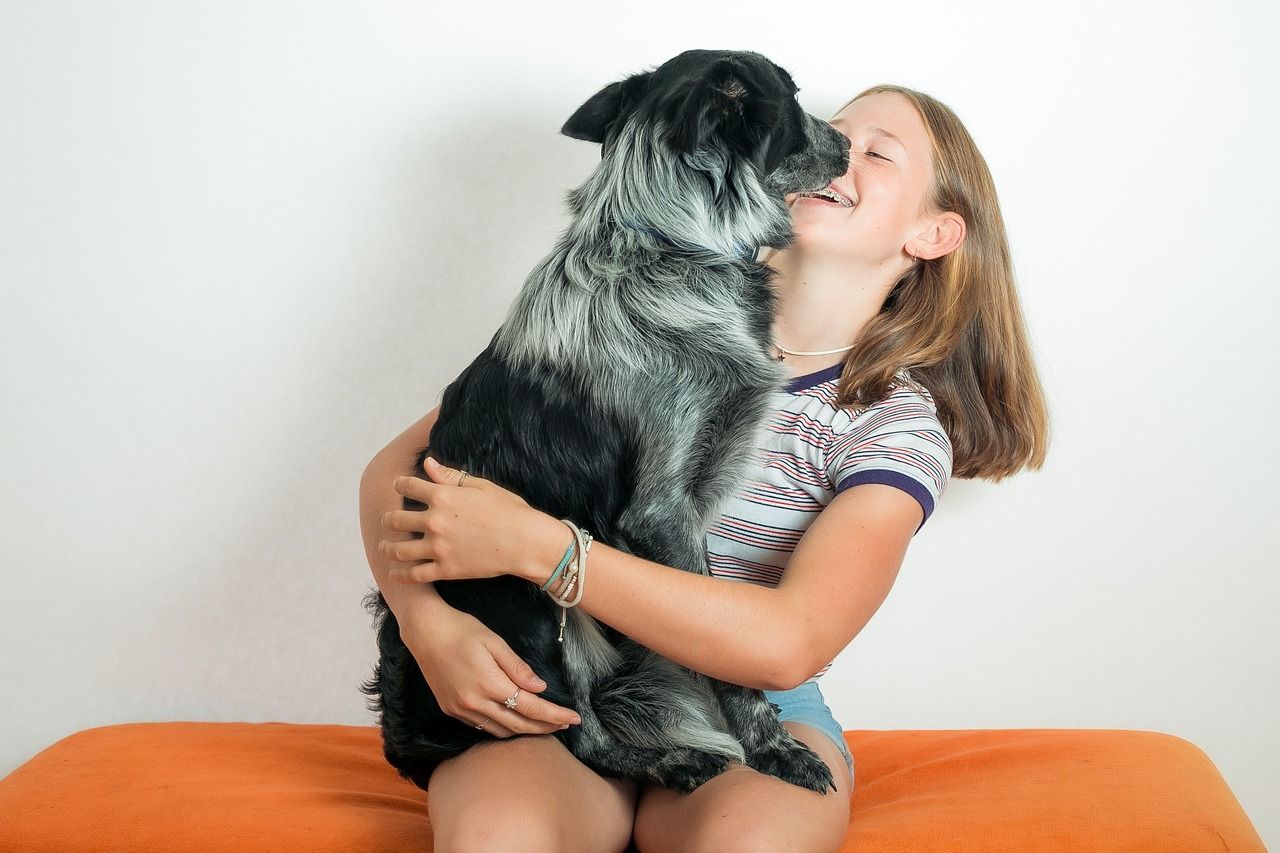Australian Cattle Dogs, often called Blue Heelers, are known for their boundless energy and sharp intellect, inherited from their herding ancestry. These traits make them remarkable companions but also raise the question: Can they be left home alone? Let’s dive into this intriguing topic.

Understanding Australian Cattle Dogs
Originating from Australia, these dogs were bred to herd cattle across vast terrains, demanding both physical endurance and strategic thinking. With their history of Blue Heeler independence in the fields, one might assume they're perfectly okay being left on their own. But is this really the case?
ACD Home Alone Behavior
When left to their own devices, some Australian Cattle Dogs might initially appear fine. They might explore their surroundings or settle down for a nap. However, due to their high intelligence and energy, prolonged isolation can lead to signs of Australian Cattle Dog separation anxiety.
Manifestations of this anxiety can range from mild restlessness to more concerning behaviors like excessive barking, chewing on furniture, or even attempts to escape. This isn't indicative of mischief but rather a cry for interaction and mental stimulation.
Effective ACD Solo Care Strategies
If circumstances require leaving an Australian Cattle Dog alone for an extended period, here are some strategies to ensure their well-being:
- Interactive Toys: Equip them with toys that mentally challenge them, like puzzle toys or treat-dispensing gadgets. This helps keep their active minds engaged.
- Prioritize Exercise: Ensure your Australian Cattle Dog has ample exercise before you leave. A well-exercised dog is more likely to rest in your absence.
- Establish Comfortable Spaces: Designate areas in your home where your dog feels safe and can relax. This could be a favorite bed or a sunny spot by the window.
- Structured Training: Invest time in Blue Heeler solo training. Gradually acclimate your dog to being alone by starting with short departures and increasing their duration over time.
- Scheduled Check-ins: If you're away for an extended time, arrange for someone to visit. This can be a friend, neighbor, or professional dog walker. This interaction, even if brief, can alleviate feelings of loneliness.
The Takeaway
The key to understanding whether Australian Cattle Dogs can be left solo lies in recognizing their individual needs. While some might handle periods of solitude better than others, it's undeniable that these dogs, with their herding lineage, thrive best with interaction and activity.
Therefore, while it's possible to leave an Australian Cattle Dog alone for short durations with the right preparations, it's essential always to prioritize their emotional and physical needs. After all, a content Australian Cattle Dog translates to a harmonious household.
Building Trust and Companionship
One of the foundational elements in the relationship between an Australian Cattle Dog and its owner is trust. When this trust is nurtured, the dog becomes more adaptable to varying situations, including periods of solitude.
Establishing a Routine
Australian Cattle Dogs, like most canines, thrive on routine. Establishing and maintaining a consistent schedule for feeding, playtime, and rest can help reduce the anxiety they might feel in your absence. When they can predict parts of their day, they're less likely to feel stressed when left alone.
Mental Stimulation is Key
Given their intelligent nature, Australian Cattle Dogs require consistent mental challenges. Apart from toys, you can introduce training sessions that focus on obedience, agility, or even tricks. These sessions not only provide the necessary mental stimulation but also strengthen the bond between you and your dog.
Socialization Opportunities
Another facet of ensuring a balanced Australian Cattle Dog is socialization. Regularly expose your dog to different environments, people, and other animals. This broadens their experiences, making them more adaptable. Dog parks or playdates with other dogs can be an excellent way for them to expend energy and learn essential social behaviors.
Health and Nutrition
The physical and mental well-being of an Australian Cattle Dog is closely tied to their diet. Ensure you're feeding them high-quality food that meets their energy needs. Regular vet check-ups are also crucial to ensure they are in optimal health, which can influence their behavior when left alone.
Integrating Technology for Comfort
In today's digital age, there are innovative ways to make the experience of being alone less daunting for our Australian Cattle Dogs.
Surveillance and Interaction
Pet Cameras: Devices like pet cameras allow you to monitor your dog's behavior when you're away. Some advanced models even come with two-way audio, enabling you to interact with your dog, which can be especially useful if they're showing signs of distress.
Automated Toys: The market now offers toys that can be remotely controlled, allowing owners to play with their pets even from afar. These toys can move, make sounds, or even dispense treats, providing both entertainment and comfort to your dog.
Consistent Companionship
Pet Playlists: Music has been shown to have a calming effect on many animals. Curating a playlist for your Australian Cattle Dog can be an effective way to soothe them during your absence. Streaming services often have pre-made playlists designed specifically for dogs.
Companion Pets: Another solution some owners consider is introducing a second pet for companionship. While this isn't a decision to be made lightly, having another dog or even a cat can provide company and reduce feelings of loneliness.
Safety Precautions
When leaving your Australian Cattle Dog solo, safety should always be paramount.
- Safe Spaces: Ensure there are areas in your home free from potential hazards. For instance, ensure there are no accessible cords they might chew on or small objects they might ingest.
- Emergency Contacts: Always leave details of a vet or an emergency contact accessible to someone who might be checking in on your dog. This ensures that, in case of any unexpected incidents, your dog can get the required care swiftly.
- ID Tags and Microchipping: On the off chance your dog manages to get out while you're away, having an ID tag and ensuring they're microchipped increases the chances of a safe return.

Understanding Their Emotional Language
While Australian Cattle Dogs may not communicate through words, they have a myriad of ways to express their feelings, needs, and concerns. It's essential to recognize these cues, especially if you plan on leaving them solo regularly.
Behavioral Cues
Destructive Behavior: If you come home to find chewed furniture or torn-up cushions, it may be a sign of pent-up energy or anxiety. Such behaviors aren't acts of rebellion but are indicators that they need more physical or mental stimulation.
Vocalizations: Excessive barking or whining might be their way of expressing loneliness or distress. Monitoring the frequency and cause can help you make necessary adjustments.
Toileting Indoors: An otherwise potty-trained Australian Cattle Dog resorting to relieving themselves indoors might be experiencing stress or could be signaling health issues.
Providing a Familiar Environment
Personal Scent: Leaving an item with your scent, like a worn t-shirt, can be comforting for your dog. Familiar smells can help reduce their anxiety and create a sense of security.
Consistent Setup: Changing the environment frequently can be unsettling for them. Try to keep their toys, bed, and feeding area consistent.
Seeking Professional Insights
If you've tried multiple strategies and still find your Australian Cattle Dog struggling with solitude, it might be time to seek professional help.
Behavioral Training: Engage a professional dog trainer who can provide tailored techniques to address specific concerns and make the solo periods more bearable for your pet.
Veterinary Consultation: Sometimes, the underlying issue might be health-related. Regular check-ups and discussing observed behaviors with your vet can provide clarity.
A Commitment to Their Well-Being
Australian Cattle Dogs, like all pets, are not just animals we care for; they're family. Their well-being and happiness directly influence the harmony of the household. The effort invested in understanding them, catering to their needs, and ensuring they're comfortable even in our absence is a testament to the bond shared.
Building Resilience in Australian Cattle Dogs
An essential aspect of ensuring that Australian Cattle Dogs can handle solitude is building their resilience. Resilience is the dog's ability to bounce back from challenges, adapt to changing circumstances, and maintain emotional equilibrium.
Gradual Exposure
Incremental Alone Time: Instead of leaving your Australian Cattle Dog alone for extended periods from the start, begin with short intervals and then gradually increase the duration. This practice helps them understand that your absence is temporary and you will return.
Varied Experiences: Expose them to different situations and stimuli. It could be as simple as changing the walking route, introducing them to new sounds, or occasionally altering their play environment. This variety builds adaptability.
Reinforcing Positive Behavior
Reward-based Training: Whenever your Australian Cattle Dog shows signs of handling solitude well, like not being destructive or anxious, reward them. Positive reinforcement emphasizes the desired behavior.
Consistent Feedback: Dogs, especially breeds as intelligent as the Australian Cattle Dog, can discern between positive and negative feedback. Consistently letting them know when they're on the right track aids in molding behavior.

Emotional Well-being: Not Just Physical
While physical care and stimulation are vital, addressing the emotional needs of the Australian Cattle Dog is equally crucial.
Affection and Attention: Spend quality time with your dog when you're around. Simple gestures like petting, talking, or even just sitting beside them can significantly impact their emotional health.
Stay Calm: Your dog can pick up on your emotions. If you're anxious about leaving them alone, they're likely to become anxious too. Ensure your departures and arrivals are calm, reinforcing the idea that being alone is just a regular part of the day.
Engaging the Community
Networking with Fellow Owners: Connecting with other Australian Cattle Dog owners can provide insights, shared experiences, and even potential playdates. Social media groups or local clubs can be valuable resources.
Utilize Dog Daycare: If you anticipate a particularly long day away, consider enrolling your dog in a reputable dog daycare. It offers social interaction and ensures they're monitored and cared for in your absence.
Nurturing the Bond: Beyond Solitude
The relationship between an owner and their Australian Cattle Dog is a dynamic one, where both parties grow, learn, and adapt. While much of our discussion has centered around managing periods of solitude, it's equally important to focus on the moments when you're together, which play a pivotal role in how well they cope when left alone.
Quality Time Over Quantity
Engaged Play: Make the most of your play sessions by being actively engaged. Whether it's a game of fetch, tug-of-war, or an agility course in your backyard, these moments of interaction reinforce your bond.
Learning Together: Consider enrolling in classes together, be it obedience training, trick training, or even dog dancing! These experiences allow you both to learn new skills and deepen your connection.
Communication: Two-Way Street
Listening to Their Cues: Over time, you'll notice that your Australian Cattle Dog has specific ways of communicating. Be it a particular bark when they're excited or a nudge with their nose when they want attention, understanding these cues makes your dog feel heard and understood.
Talking to Them: While they might not understand every word, the tone and rhythm of your voice provide comfort. Regularly talking to your dog helps them recognize your voice as a source of comfort, which can be particularly soothing during moments of distress.
Adventures and Exploration
Nature Outings: Given their origins, Australian Cattle Dogs thrive in open spaces. Regular trips to nature trails, beaches, or parks can be refreshing and provide a break from the routine.
Travel Together: If possible, consider taking your Australian Cattle Dog on trips. Whether it's a short weekend getaway or a longer vacation, exploring new places together can be a bonding experience.
Health: The Foundation of Well-being
Regular Check-ups: Health plays a significant role in behavior. Ensure that your dog has regular vet visits to keep them in the best possible health.
Dietary Needs: A well-balanced diet, tailored to their energy and nutritional needs, ensures they remain active and reduces potential health-related stressors.
Enrichment: Key to a Contented Australian Cattle Dog
Enrichment is more than just toys and treats. It's about providing an environment that caters to the natural instincts, behaviors, and needs of the Australian Cattle Dog. With their high intelligence and energy levels, these dogs crave varied forms of stimulation.
Sensory Stimulation
Scent Games: Utilize their keen sense of smell with games that involve hiding treats or toys and encouraging them to find them. This not only provides physical activity but also challenges their olfactory senses.
Sound Exposure: Playing recordings of different sounds, from natural sounds to urban noises, can be both calming and mentally stimulating.
Physical Enrichment
Interactive Toys: Toys that move unpredictably, like automatic ball launchers or puzzle toys, can keep an Australian Cattle Dog entertained for extended periods.
Obstacle Courses: Using household items or specialized equipment, create obstacle courses in your backyard. This provides both physical exercise and mental challenge.
Cognitive Challenges
Training Sessions: Beyond basic commands, Australian Cattle Dogs excel in learning complex tricks or behaviors. Regularly introducing new commands keeps them mentally sharp.
Puzzle Toys: Toys that dispense treats when manipulated in a certain way are excellent for cognitive stimulation.
Social Enrichment
Whether it's a training class or a socialization group, interacting with other dogs and humans in a structured environment can be beneficial. Regularly meeting with familiar dogs can provide the social interaction that Australian Cattle Dogs, being pack animals, naturally crave.
Adaptability: The Road Ahead
The Australian Cattle Dog's adaptability is one of its defining traits. But this adaptability doesn't come automatically; it's a product of their environment, training, and experiences.
Embracing Change
Life is unpredictable, and circumstances can change. Whether it's a move to a new home, the arrival of a new family member, or changes in your routine, these dogs can adapt with the right support.
Preparation: Whenever possible, prepare your Australian Cattle Dog for upcoming changes. Introduce new elements gradually and ensure they have a safe space.
Positive Reinforcement: Reward them for calm and adaptable behavior during transitions, emphasizing that change can be positive.
Continuous Learning
As they age, the needs of the Australian Cattle Dog might change. Staying informed, whether through reading, consulting experts, or joining relevant communities, ensures you always provide the best for your furry friend.

Conclusion:
Navigating the complexities of leaving an Australian Cattle Dog home alone requires understanding their unique characteristics, from their origins to emotional cues. Their high energy and intelligence demand varied enrichment, from sensory games to cognitive challenges. Building resilience through gradual exposure, positive reinforcement, and ensuring emotional well-being are paramount.
Engaging with fellow owners and professionals offers insights and additional support. Regular health check-ups and a balanced diet form the bedrock of their well-being. Embracing change and ongoing learning ensures adaptability. Ultimately, nurturing the bond, whether together or apart, is the essence of a fulfilling companionship with these remarkable dogs.
Frequently Asked Questions (FAQs):
- Can Australian Cattle Dogs handle being left home alone?
- Yes, with proper training and enrichment, Australian Cattle Dogs can manage periods of solitude. However, given their high energy and intelligence, providing adequate mental and physical stimulation is crucial.
- How long can I leave my Australian Cattle Dog solo at home?
- While individual dogs vary, leaving an Australian Cattle Dog alone for more than 4-6 hours is generally not advisable. Prolonged solitude can lead to stress and destructive behaviors.
- What are the signs my Australian Cattle Dog is struggling with loneliness?
- Common indicators include destructive behavior, excessive vocalizations, toileting indoors, and signs of anxiety or depression.
- How can I prepare my Australian Cattle Dog for periods of solitude?
- Gradual exposure to alone time, providing an environment filled with sensory stimulation, interactive toys, puzzle challenges, and maintaining a consistent routine can help prepare them.
- Are there health concerns associated with leaving my Australian Cattle Dog alone frequently?
- Prolonged periods of solitude can lead to anxiety, which might manifest as physical ailments. Regular vet check-ups and observing behavioral changes are crucial.
- How can I ensure my Australian Cattle Dog's emotional well-being when I'm not around?
- Leaving familiar scents, offering toys that stimulate their mind, and ensuring a consistent environment can help cater to their emotional needs.






